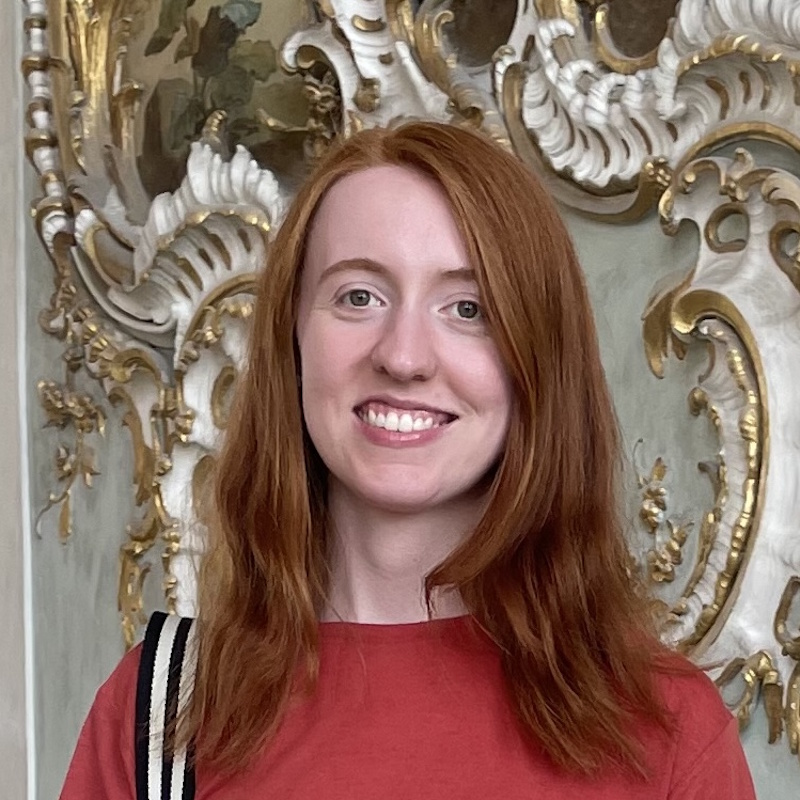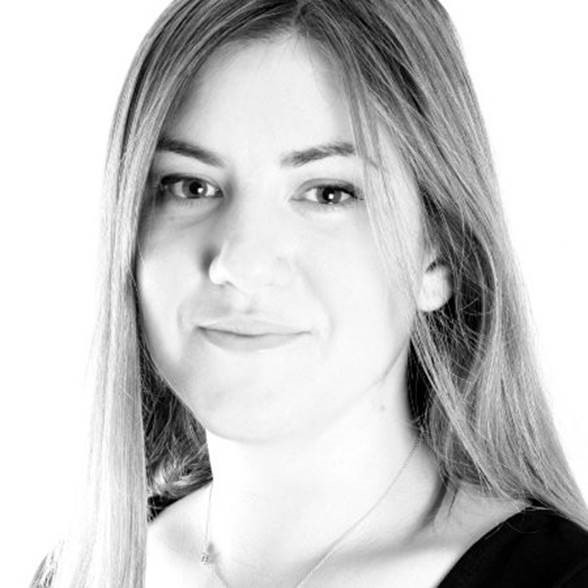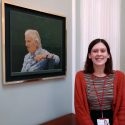Why did the Royal Society reject a 1932 scientific paper on the use of X-rays to stimulate the retina? Louisiane Ferlier investigates.

The title sounds like a science fiction novel: ‘Seeing with closed eyes’. This, however, was a scientific paper on the use of X-rays to stimulate the retina, submitted to the Royal Society in 1932 by ‘one of the pioneer radiologists of Canadian medicine’, Alexander Howard Pirie (1875-1944). Later that year, Pirie would receive a gold medal for a lecture with the same title at the Annual Meeting of the American Roentgen Ray Society.
Despite its solid credentials, the paper – communicated by physicist Arthur Eve FRS, who had worked on radioactivity in Ernest Rutherford’s laboratory at McGill University – was rejected for publication in a Royal Society journal. This means that, before Kiera Evans catalogued the related correspondence as part of the ‘Withdrawn Referees’ Reports’ (prefix RR/W) we added to Science in the Making last week, it seemed like one for the ‘crank pile’.
Indeed, the first report on the paper, by John Parsons FRS, was quite damning:
‘There is no evidence that the author eliminated luminous radiation, much of which will pass through the closed lids & a cataractous lens. This would account for entropic vision of a foreign body &c. Placing opaque letters &c, in contact with the lids suggests the possibility of unconscious bias for tactile stimulation’.
You can now find online Eve’s response to the peer review report, in a letter addressed directly to Sir Henry Dale FRS, then Secretary of the Royal Society:
In the letter, Eve adds his own first-hand testimony to defend Pirie, who had summarised his process in an article published in the Canadian Medical Association Journal (below), writing that:
‘The method is extremely simple, the first essential is that the observer must remain in total darkness for ten minutes. By that time he is able to see light when x-rays strike his retina.’

In other words, bombard someone’s eyes directly with X-rays, after they have been sitting in the dark, so that they are able to read letters made of lead even through closed eyelids and a blindfold. Eve suggested in his letter to Dale that Rutherford had previously obtained similar results (‘early in the century Lord Rutherford showed me with my own eyes that the gamma rays of radium, in a well darkened room, also stimulate the retina’), and described his experience of Pirie’s methods:
‘Dr. Pirie placed me for ten minutes in a well darkened room. He then sent the X-rays from a point on the anticathode, seven inches from my eye, past lead letters 5 x 3 millimetres, then on for another half inch when they entered my eyelids, which were closed and screened with four layers of thick black silk. By pulling the sentence along horizontally I was able to read “No man can foretell the future”, the words being previously unknown to me. I then placed the middle of the palm of my open hand in front of my eye and I still read the letters without difficulty.’
The experiment was repeated on at least 100 observers with similar results. Pirie noted that ‘a person whose retina is intact but who is blind from opacity in front of the retina can see letters and pictures by this method’, and proposed that his method could therefore be used to map out the field of vision of patients ‘even in cases of complete cataract and opaque cornea’. He also observed a secondary effect in his experiments, in which the spectacles of his trial subjects fluoresced, and suggested that this would enable an ophthalmologist to identify a piece of glass lodged in an injured eye.
Upon reading Eve’s robust defense of Pirie, Dale wrote to the original reviewer, Parsons, to ask him if ‘it is worth while [to suggest] amplifications on the points with which your criticism dealt; or shall I adhere to my suggestion that it be withdrawn?’
However, Dale’s letter crossed in the post with another one from Eve dated 12 November, which announced that Pirie had in fact chosen to ‘forward [his paper] to a medical journal where it might come before those who are specially interested in the application of X-rays to the extraction of foreign bodies in the cornea’. Shortly afterwards, Dale also noted that:
‘since [your letter] I have seen a copy of the Canadian Medical Association Journal for November 1932, in which there is an article by Dr. Pirie which seems effectively to anticipate the substance of the paper which you communicated for him to the Royal Society. We have always made rather a strict rule against accepting matter for publication which has previously been published in a form exceeding that of a mere preliminary note.’
Ultimately, then, the paper never made it into a Royal Society journal.
Medical radiography has seen incredible progress since Pirie’s experiments. Most importantly, a greater understanding of the dangers of radiation has led to strict protocols to reduce exposure. Reading (with open eyes) Eve’s letter made me question how many of the early X-ray scientists died due to the side effects of radiation. By 1932 the dangers had been amply established, and pioneers of medical X-rays were realistic about the health effects: Émil Grubbé, for example, wrote in his autobiography that ‘I will die from the effects of early uncontrolled exposures to X-rays. And like many of the early pioneers, I too will die a victim of natural science, a martyr to the X-rays.’
Only four years after Pirie’s paper was proposed, the Monument to the X-ray and Radium Martyrs of All Nations would be unveiled in Hamburg. It includes the name of Marie Curie, of course, but also of a George Alexander Pirie. I’ve not yet been able to discover whether there's a link between him and Alexander Howard Pirie, but I’m keeping my (X-ray) eyes open…







